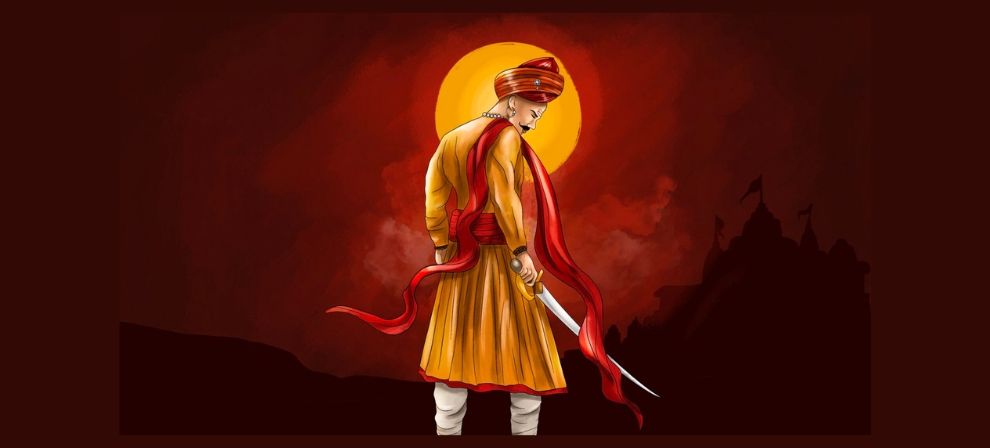The Pillar of the Throne
India had great rulers in the past. The strong and weak played a game in which many emerged powerful than others. Peshwa Balaji Baji Rao did not emerge as the true Maratha ruler in a vacuum of power but created a space for himself. His death on this day was a shock for many!

Pillar of the Throne. Pav Bhaji Story. Illustrated by Spoorthi KY: Visual Storyteller at ThisDay
The sovereignty of the Marathas had been established in the Deccan. They had managed to carve out an empire, strong in the middle of the country, whose might was growing with every passing day. From the 1740s Peshwa Balaji Baji Rao was ruling over the Maratha's land. Popularly known as Nana Saheb, he had risen to the power of his father's death and was gradually becoming more powerful than the king himself.
Under Balaji Baji Rao's Peshwai, he became the real and effective head of the state. When King Shahu died, the Sangola Pact made him the official head. This reduced the Chhatrapati only to a figurehead. The Maratha king sat on the throne but the real pillars of power were the Peshwa. This was also the time when Marathas were divided into a confederacy and individual powerheads like Scindias and Holkars and Bhonsle emerged as powerful heads of the state.
All in all, Marathas rose high and powerful, at the epitome of power, like the rising sun on the zenith, ready to shine its light on the world. The Peshwa was the center of the sun.
While most of the expansion was done by emerging chiefs, it happened under the instructions and guidance of Balaji Baji Rao. Eventually, a class of men born and bred for warfare was reduced to financiers - the state's rulers, far away from generalship.
Slowly emerging as the main powerhouse, the Peshwa's relations with those around him were also becoming complicated with time. Gaekwads were arrested and shipped to Pune. The jagirs and titles of Dabhades were confiscated. The Rajputs were alienated. The relations with Jats worsened. In the house, younger brother Raghunath Rao looked for his jagir to earn considerable revenue as income. All that remained on the ground was Peshwa and his unchallenged power and on all sides endless enemies who wanted to overthrow him and snatch the power for themselves.
Three centuries ago, the shape of India was changing. In the games of power and kingship, the weight of the thrones was shifting. The power was falling down in the subcontinent in the land of hills that look like tables.
As the Mughal power decreased and North India went into several skirmishes fighting each other's heads off, Peshwa was enticed to increase his power and establish himself at Delhi. While the throne in Delhi had weaker legs, the significance of Delhi remained as it was. The earlier promises of faithfulness to the Mughals were forgotten in the greed of power. Malwa belonged to the Peshwa now but the Mughals did not win the loyalty in return.
When Ahmad Shah Abdali stood on the borders of India, ready to invade the country of its wealth and power, the panicked Mughals called the Marathas for help. Their military prowess was unmatched in the whole country.
The Marathas, knowing what this call would eventually lead to, took their horses and weapons and made a march to Delhi with their saffron flags raised high above in the skies.
Marathas not only made Abdali their enemy but their political influence grew as far as Delhi and Punjab. Ahmad Shah was thrown out of the country but not forever. In 1757, he made a comeback and this time wreaked havoc from Delhi to as far as the Maratha lands. When Peshwa had had enough of the atrocities opened by the foreign leech, he prepared a force in Poona.
Under the command of Raghunath Rao and Malhar Rao Holkar, an army marched on the north. Battles and wars, bloodshed, and bravery made sure that Marathas won the throne at Delhi, not for themselves, but for the Mughals, making the Badhshah a puppet in the hands of Maratha generals. Abdali was slowly thrown out step by step. As the Maratha saffron moved ahead, Abdali's flag was withdrawn.
This made the conflict between Marathas and Abdali unavoidable and imminent. The war was bound to happen.
In 1761, the Maratha army stood face to face with Ahmad Shah's army at Panipat. At the head of the Marathas stood Peshwa's own son Vishwas Rao and a war-washed general Sadashiv Rao Bhau. In the clash of swords and the game of blood, both the Raos fell, never to rise again.
The news reached the Peshwa in Poona who was preparing a reinforcement force at the time. Everything he had done so far fell on the ground. His eldest was lying dead thousands of kilometres away from him. The shock took Balaji 6 months later and he died on 23 June 1761, remembering his son who had died fighting his battles. He was succeeded by the younger son Madhav Rao I who carried on the legacy of his father.

Balaji Baji Rao; Source: Wikimedia Commons


